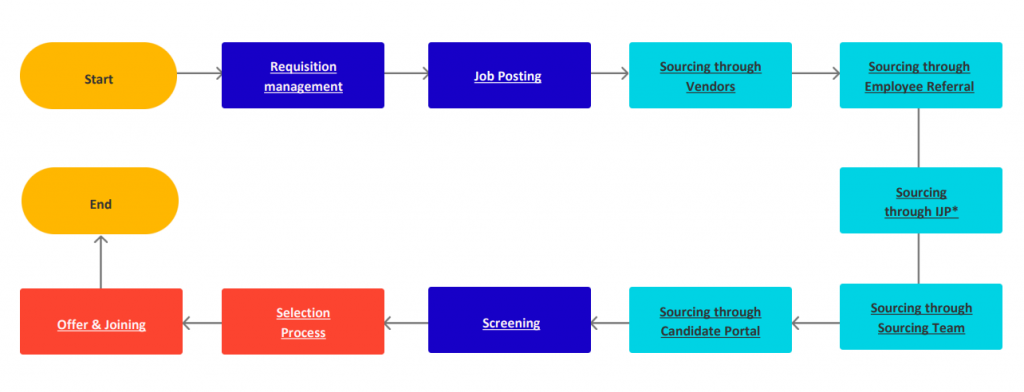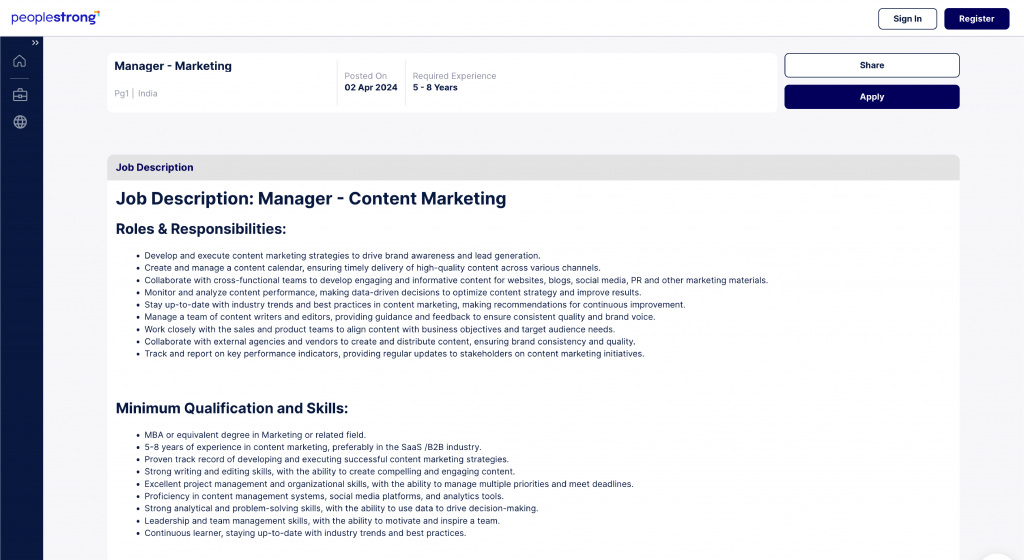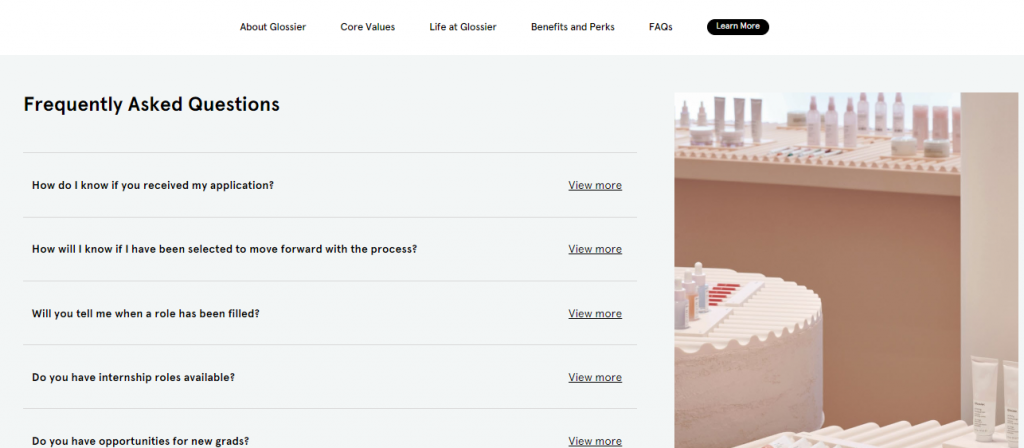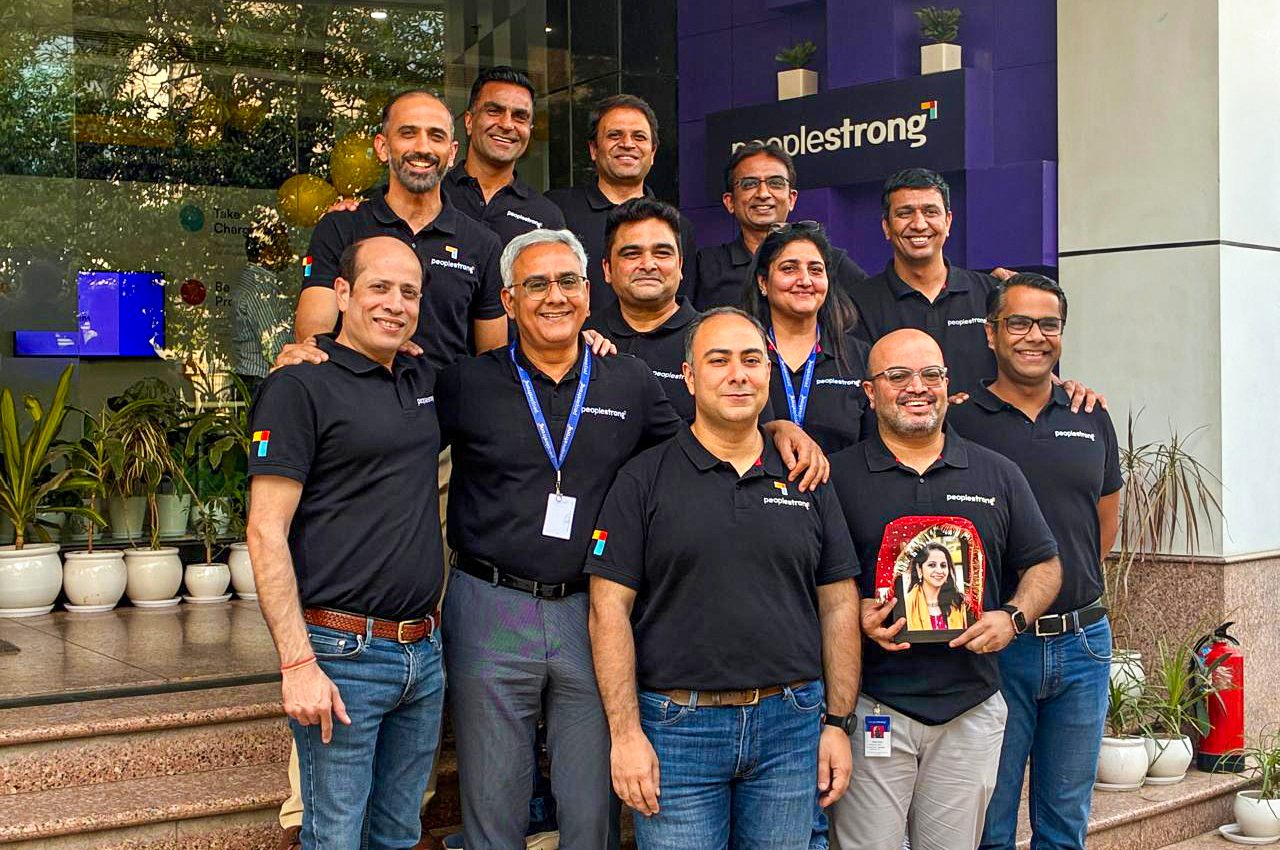Every organization wants high-performing talent on its payroll—but few achieve it. Building a robust talent pool with effective recruitment strategies takes time, effort, and patience.
Since no two organizations’ recruiting process looks alike, you need a customized recruitment strategy to:
- Streamline your interview process
- Improve the time to hire
- Identify qualified candidates
In fact, quality of hire has emerged as a top priority for 54% of recruiting professionals, followed by employer branding (49%) and improving the candidate experience (47%) in 2024.
In this guide, we’re deep-diving into the 10 latest recruitment strategies to give your business a talent edge. Read on to optimize your recruiting efforts.
What is a Recruitment Strategy?

A recruiting strategy is a formal plan of action for recruiters to find and hire top candidates for open job roles. This strategy factors the organization’s current talent needs as well as future requirements to build a talent pipeline that’s cost-effective and productive.
Seasoned hiring managers know that implementing a recruitment strategy at every stage of the hiring process accelerates the talent-finding process in times of need.
Why Work on a Recruitment Strategy?
A good recruitment strategy helps capture the attention of qualified job seekers, creates a positive first impression, and helps managers hire job-ready candidates. If done consistently, it also helps improve your talent acquisition efforts and set your hiring process straight.
Other advantages of leveraging personalized recruitment strategies to attract top talent include:
- Easy and quick filling of challenging, highly-skilled job roles
- Access to a wider pool of prospective applicants who are a better fit for the organization
- Reduced time to hire and hiring costs
- Increased brand awareness in the right circles
- Improved candidate matches for the position, leading to better employee performance and retention
How to Develop a Recruitment Strategy?
A well-conceived recruitment strategy starts with auditing your current strategy and ends with acting on candidate feedback collected. Clearly, it’s not just about finding the right people—but the right approach.
Below is a step-by-step guide to crafting your recruitment strategy plan:
Step 1: Ask – Do you have a good understanding of your organization’s hiring needs?
The first step is to know your organization inside and out:
- What are your hiring goals?
- What kind of talent do you need to bridge the skills-roles gap?
Insights into these questions will help narrow your search to candidates who have gained new skills and experience that fit the bill.
Step 2: Audit your current talent recruitment strategy.
Auditing your current hiring process allows you to understand whether your recruitment efforts are a hit or miss. So, make sure to:
- Analyze whether you are using relevant key performance indicators to measure success
- Define the roles you are hiring for
- Assess the best formats for advertising jobs
- Evaluate strategic criteria for determining top talent
With a granular understanding of all these areas, you’ll be able to get high-quality candidates quickly.
Step 3: Don’t embrace a blanket approach.
When it comes to recruitment, one size certainly doesn’t fit all. Different roles will require different approaches so you must strategize accordingly. For instance, based on your ideal candidate profile, you may find advertising job descriptions on niche job boards like GitHub to be more effective than using platforms like Glassdoor.
Step 4: Collect, analyze, and act on candidate feedback.
Don’t forget about gathering candidate feedback, especially during exit interviews. Your ex-talent’s opinion is a gateway into valuable information about what’s working and what isn’t within your recruitment process. This feedback is a goldmine of information that can help you pivot and build a better candidate experience.
Step 5: Embrace consistency.
Finally, remember to factor in a long-term talent recruitment strategy within your plan. Think about creating a talent community where you drive consistent messaging, engage with interested job seekers, and work up your organization’s branding. This way, you’ll be able to keep top talent in the loop and hire them for future roles that are a better fit.
Suggested Read:
5 Essentials Every Recruiter Must Have in Their Recruitment Kit
10 Effective Recruitment Strategies to Attract Top Talent
The success of your recruitment strategy rests on how well you align your organization’s goals with the candidate’s experience and expectations. Here are 10 recruitment strategies to attract the best talent:
1. Make Onboarding a Part of Your Recruitment Strategy
Viewing your recruitment and onboarding process in isolation is a big mistake.
Once you’ve hired the right candidate, it’s time to move into the next leg of recruitment, aka onboarding.
Invest in a strategic applicant tracking system to better manage your hiring and recruitment processes, filter candidates, set up reminders and appointments, and onboard new hires.
Leveraging recruitment software to onboard new hires saves time and effort for hiring managers who can use it to:
- Roll out a job offer
- Send company culture videos, knowledge base articles, how-to blogs, and forms to help the candidate learn about the organization and give feedback. Incorporating a vertical video strategy can make these videos more engaging and accessible, especially for candidates viewing them on mobile devices
- Help the new hire understand the rules, guidelines, and policies of the company
When searching for a recruitment software, ask:
- How will you integrate onboarding into your recruitment strategy?
- What steps will you take to personalize the onboarding experience for new hires?
- How will you ensure that new hires understand their roles and responsibilities?
- What technology will you use to streamline your recruitment and onboarding processes?
- How will you collect feedback from new hires to improve the onboarding process?
- How will you introduce new hires to your company’s culture and values?
- Will you assign mentors to new hires? How will this benefit the onboarding process?
If you’re looking to hire remote workers, check out this HR checklist for hiring and onboarding remote employees.
2. Make Your Career Page Shine with Engaging Job Postings

Your job description is the first window of opportunity to show (not just tell) qualified candidates how your organization stands out.
With a recruitment tool, you can publish job postings on the fly to a wider audience, connect with your candidate pool, and build excitement about open roles within your company.
Here’s an example of a well-conceived job offer:

Pro tip: Use the Career page to talk about open roles, share relevant blogs on company culture, showcase awards won, promote diversity statistics, and walk the candidate through the company’s intrinsic culture.
3. Tap Into Hidden Talent Pools, Level Up Your Sourcing Game
Sure, you must post job offers on sites such as LinkedIn, Indeed, Glassdoor, and more to connect with potential candidates, but your search shouldn’t stop there. You must activate passive candidates and expand your search with the right recruitment technology.
Here’s a list of forgotten channels and platforms to use and level up your sourcing game:
- Post on relevant social media handles:

- Scout talent in networking events
- Put up the job description on niche job boards such as Stack Overflow, Dribbble, Behance, etc.
- Write blogs on your recruitment process on platforms like Quora, Medium, Reddit, etc.
- Reach out to past applicants, veterans, mothers and caregivers, candidates with disabilities, etc., if the role is relevant
- Look within the company talent pool and encourage internal mobility between roles
You can also look at specific demographics like MG Motor India did. The brand wanted to hire more women employees across its sales and service outlets. It leveraged PeopleStrong, an AI-powered recruitment platform, to drive digital talent matchmaking, get data on specific skill sets within the candidate pool, and hire candidates strategically. Sometimes, looking at an untapped pool of candidates pays off huge dividends, as it did for MG Motor.
4. Create a Winning Employee Referral Program
Want to reduce some of the workload on your recruitment team? Set up an employee referral program, which includes:
- Substantial bonus for difficult-to-hire job roles
- Incentives for referrals from an underrepresented group
- Rewards for referring multiple candidates who get hired
Here’s an example of excellent employee referral program. The brand gives out experience-based referrals such as an all-expense paid trip, motorbike, etc., instead of giving cash:

The brand used team huddles, posters, screensavers, and publicly-driven awards to spread the good word and reward employees.
To create a successful program, consider these tips:
- Determine what you aim to achieve with the program, such as reducing time-to-hire or improving the quality of hires
- Establish clear guidelines for the program, including eligibility criteria, reward structure, and communication plan
- Spread the word about the program through various channels, such as email, company intranet, and meetings
- Monitor the program’s effectiveness by tracking strategic KPIs such as referral rates, time-to-hire, and quality of hires
5. Showcase Your EVP and Culture with Branding Genius
Showcasing your brand’s Employee Value Proposition is instrumental in getting top talent through the door.
You can create a recruitment video or a dedicated culture page, as PeopleStrong demonstrates below, to introduce potential employees to your company, its mission, and its culture in a fun way:

Taking a few minutes to explain these aspects along with the job can help provide a clear picture to candidates before they step through the door. This approach helps vet candidates and attracts those who are genuinely interested in aligning themselves with your company.
6. Fuel Decisions with Data and AI, Not Doubts
Your recruitment process should not be driven blind. You need actionable, real-time data to make informed decisions on what’s sticking. This is where investing in a recruitment tool pays off.
A good recruitment tool provides insights into your hiring pipeline, candidate sourcing effectiveness, and interview performance. More importantly, recruitment tools can reduce human dependence and digitize HR processes.
Case study : How a Leading Housing Finance Company Managed 90% of their Employee Queries through AI
The objective: To digitize HR processes completely and move beyond the traditional methods of using spreadsheets, emails, and biometric devices.
The solution: The brand implemented a comprehensive HR Tech solution with modern features for recruiting, onboarding, leave-tracking, attendance, Employee Lifecycle Management, etc., leading to HR efficiency:
The tool helped the brand:
• Reduce human intervention for data maintenance
• Create a central repository for employee information
• Set up a secure data-sharing tool for internal communication
• Create a digital talent pool and attract high-potential talent
• Establish a centralized system to conduct structured employee onboarding and training
The results:
• 96% adoption rate in the organization within 3 months of going live
• 85% of employees rely on mobile apps for daily check-ins and communication
• 90% of employee queries were answered by Jinie, an AI-enabled HR chatbot
• 100% of MIS and analytics dashboards became accessible in real-time
Read Full Case Study:
A Housing Finance Company Automated 90% Of Employees Queries Using AI
7. Boost Brand Presence—Online and Offline
Recruiting is a bit of a show-off game, but for the right reasons. You need to constantly promote your brand across offline and online channels. Here’s a sample recruitment strategy by beauty brand that organizations of all sizes must emulate.
The brand has created an FAQs section on its website for some of the most commonly asked questions:

That’s not all. The Career page starts with open job roles and moves on to communicating the company’s values, what life looks like in the company, benefits and perks for employees, and details about the team.
Whether you use an online or an offline channel, you must elaborate on how candidates can hear back from you and where they can find more information about open roles. To enhance accessibility, companies can create a personalized QR code that directs candidates to job listings, company culture videos, or employee testimonials. Placing these QR codes on job fair booths, flyers, or business cards allows potential applicants to engage with your brand effortlessly and apply instantly. Whether you use an online or an offline channel, you must elaborate on how candidates can hear back from you and where they can find more information about open roles.
8. Build a Digital-first Strategic Recruitment Strategy and Improve Candidate Experience at Every Milestone
Whether you go for a video interview platform, an AI chatbot, or an end-to-end recruitment software, make sure that the tool helps you streamline and automate routine tasks.
Your end goal should be to help the team focus on other aspects of recruiting like addressing a potential candidate’s pain points and getting them on board instead of wasting time doing admin tasks.
Pro tip: With hybrid working becoming more and more commonplace, you need software to conduct virtual interviews.
9. Hire for Soft Skills: The Bright Side of Recruitment
When hiring talent, don’t just look at the technical skills. Pay equal attention to the candidate’s soft skills, such as communication, teamwork, adaptability, problem-solving, and leadership.
These must-have skills will help determine:
- How well an employee will fit into your company culture
- How candidates will interact with colleagues and clients
- How effectively the talent will tackle new challenges head-on
Hiring for soft skills creates a harmonious and productive workplace—one where employees are better equipped to collaborate and innovate.
10. Ace Your Interviews: Optimize, Improve, Impress!
Optimizing your interview process improves your chances of finding the right candidate for your team and leaves a lasting impression on potential hires.
To nail your interviews, follow these key tips:
- Familiarize yourself with the candidate’s resume and prepare relevant questions to assess their skills and fit for the role
- Make the candidate feel comfortable and welcome to encourage open and honest communication
- Ask questions that prompt candidates to discuss specific examples from past experiences
- Pay attention to the candidate’s responses and ask follow-up questions
- Use the interview as an opportunity to showcase your company’s values, culture, and vision
- Send a thank-you email to candidates after the interview to express your appreciation for their time and interest in the position
Ready to Take Your Recruiting Efforts to the Next Level?
There you go. Hiring job-fit candidates is the beginning of your recruitment efforts—not the end.
If you want to attract top talent—and keep them—within your organization, optimizing your recruitment process continuously is key.
Plus, it doesn’t hurt to get automation to streamline your recruitment efforts. There’s a reason why PeopleStrong has been rated as the best recruitment software in Asia Pacific. Leverage our AI-powered recruitment platform to build a robust talent pipeline and protect your organization’s biggest asset—your human talent.
FAQs
What are the stages of recruitment strategy?
There are five stages for creating a thorough, efficient, and successful recruitment process:
- Planning: Defining the organization’s hiring needs and setting recruitment goals
- Sourcing: Identifying and attracting potential candidates using a cross-channel mix of job boards, networking events, social media, job fairs, etc.
- Screening: Assessing resumes, driving one-on-one interviews, and evaluating a candidates’ skills and qualifications
- Selection: Prioritizing the ideal candidate for the role and making a job offer
- Onboarding: Welcoming the new hire and helping them acclimate to their new role and the organization
What is the strategic approach to recruitment?
A strategic approach to recruitment entails finding—and hiring—the right talent using three key components: targeted selling, on-point employer branding, and holistic recruitment marketing. All in all, it’s a recruitment-focused marketing strategy that empowers brands to source quality talent within a cut-throat hiring landscape.












